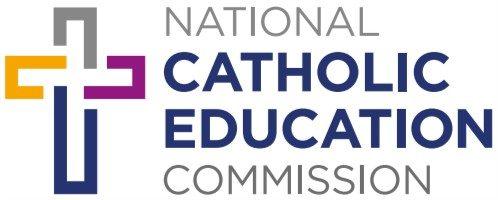Building teacher capacity to improve the mathematical outcomes for students
Introduction
In the heart of north-west NSW, the Armidale Catholic Schools Office oversees 24 schools, each dedicated to fostering the faith formation, learning improvement and wellbeing of students. Among these schools, a successful initiative is supporting numeracy and mathematics learning improvement – the Mathematics Specialist Teacher (MaST) project.
MaST project vision
Driven by a commitment to educational excellence, the MaST project aims to lift student learning achievement in numeracy and mathematics through a system-wide approach, based on high-impact instruction and the gradual release and acceptance of responsibility model.
MaST in action
A specialist mathematics teacher (MaST) is employed in each school to enhance mathematics learning and teaching by developing and sustaining a culture of continued improvement. MaSTs are selected according to their skills and knowledge of mathematics and effectiveness in leading the project.
With the support of subject matter experts (SMEs) from the Armidale Catholic Schools Office, MaSTs:
- Build teacher capacity through coaching
- Engage in regular learning walk and talks with colleagues
- Model, co-teach, co-evaluate and co-plan
- Lead mathematics professional learning teams (PLTs)
- Analyse data with staff and apply analysis to direct learning

Armidale Catholic Schools Office’s subject matter expert (MaST project) Trish Mitchell said that the project is a way for teachers to engage in deep pedagogical and subject matter professional learning and collaboration.
“Through coaching, collaborative learning sessions, and hands-on teaching experiences, the specialist teachers support teachers within each school to develop knowledge and skills in mathematics teaching, build teacher capacity and respond to the needs of students using learning data and evidence,” Trish said.
MaST pillars
The MaST project focuses on three areas.
- Strengthening mathematical knowledge: Going beyond syllabus content to cultivate a deep understanding of mathematical concepts.
- The Great Mathematics Learning Sequence – an approach to mathematics teaching which promotes effective practice through a gradual release and acceptance of responsibility. The process is fluid and depends on the content to be learned but a gradual release of responsibility with explicit teaching is essential.
- Common units and assessment – schools are provided with quality units of work (K-6) that ensure a consistent approach to teaching mathematics, using high impact instruction through an efficient and effective progression of skills and strategies.
- Professional learning opportunities – MaSTs attend a weekly online PLT meeting where relevant professional learning is shared, including unpacking of programs. MaSTs then disseminate the professional learning in PLTs. Subject matter experts (SMEs), MaSTs and leader of pedagogy (LOPs) also deliver professional learning in PLTs, staff meetings and parent workshops with contemporary research and hands-on, engaging approaches to improve mathematical knowledge.
- Strengthening curriculum knowledge: Mastering the K-10 syllabus to create dynamic and tailored learning experiences.
- Common scope and sequence in all schools.
- Common teaching programs – schools are provided with quality programs (K-6) that ensure a consistent approach to teaching mathematics, using high impact instruction through an efficient and effective progression of skills and strategies.
- Differentiation in the teaching programs – activities in the programs are differentiated to ensure that students can access the content at a level that best suits their need at the time.
- Emphasis on the learning continuum – each program has an accompanying graphic which displays the learning continuum for that specific content area based on the NESA syllabus.
- Strengthening pedagogical knowledge: Implementing effective teaching strategies, guided by the Great Mathematics Learning Sequence, and supported by powerful assessments and feedback with PLTs focusing on reflection.
- Gradual release of responsibility model – this ensures that students are supported in their acquisition of skills and strategies necessary for success.
- Appropriate use of technology – each MaST is provided with technology to support the learning and teaching in mathematics, provide opportunities to reflect, and build teacher capacity and practice through the recording of learning sequences and the subsequent reflection in PLTs.
- Co-teaching – teachers receive support from the LOP, MaST and SME through co-teaching. Modelling best practice ensures consistency in teaching, using high quality units of work provided to every classroom teacher.
- PLTs – MaSTs and SMEs work collaboratively with teachers in PLTs to disseminate information, unpack professional learning (including teaching programs and assessments) and reflect on teaching practice using videos.
- Common assessments and rubrics – sharing of exemplar assessments and accompanying rubric ensures that all teachers are exposed to assessments that are effective, efficient and have equity for all students.
- Data informed learning – the use of internal and external assessment and data sets to determine next steps of learning and analyse impact.
Impact and transformation



As a result of the MaST project a positive impact has been identified across mathematical knowledge, knowledge of the syllabus and impact for students.
- Mathematical knowledge: Teachers were surveyed at the beginning of their involvement in the project and again at the end of the year. The data indicates that 68 per cent of teachers did not feel confident with their own mathematical knowledge before starting the project, regardless of their experience. After working with the project, receiving professional development and teaching from the units of work, 92 per cent of teachers rated themselves as feeling confident and their mathematical knowledge and understanding had improved extensively. They concluded that the sequence of mathematical skills and strategies taught, the breakdown of the units of work, professional learning targeted at each strand of the syllabus, common language and scaffolds and a system approach were the reasons behind this shift.
- Knowledge of the syllabus: 24 per cent of teachers involved in the project rated themselves as having a good understanding of the K-6 mathematics syllabus prior to starting the year. By the end of the year, 84 per cent felt their knowledge of the syllabus had immensely improved and they were confident with the progression of mathematical skills and strategies, outcomes and content, background information, misconceptions and can make connections between stages.
- Impact for students: A significant impact can be seen for students across the diocese. For example, 65 per cent of Year 3 students who had almost four years on the MaST project achieved the strong and exceeding proficiency standards in NAPLAN, with only 6 per cent requiring additional support. PAT-M data indicates that in 2023, 80 per cent were above the norm sample.
Greg O’Toole, co-principal and MaST at St Joseph’s Primary School, Tamworth said the results speak volumes.
“We have seen some very positive results from the MaST project, not just in the confidence and capacity-building of teachers, but also in learning improvement with a greater number of students achieving higher standards in NAPLAN testing,” Greg said.
For further information about the MaST project contact the Armidale Catholic Schools Office.
Video spotlight
Experience the impact of the MaST Project first-hand with a special feature on St Joseph’s Primary School, West Tamworth NSW.
Images and video courtesy of the Armidale Catholic Schools Office.
